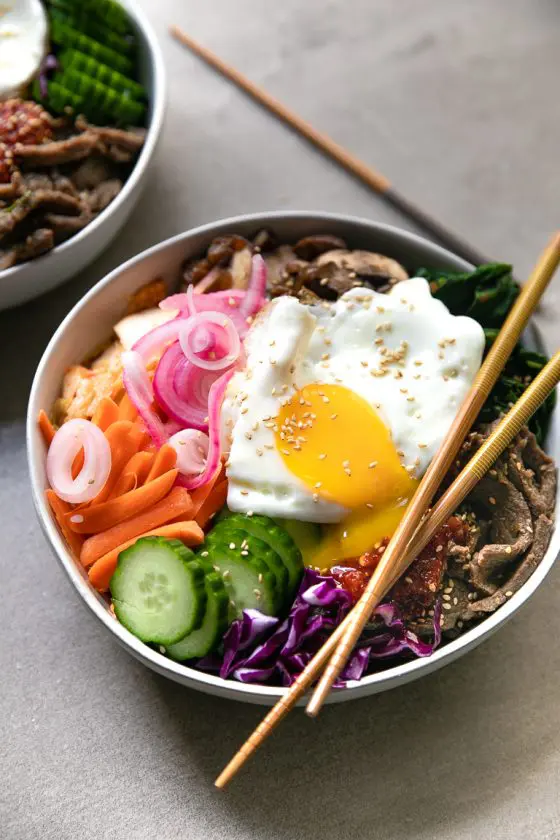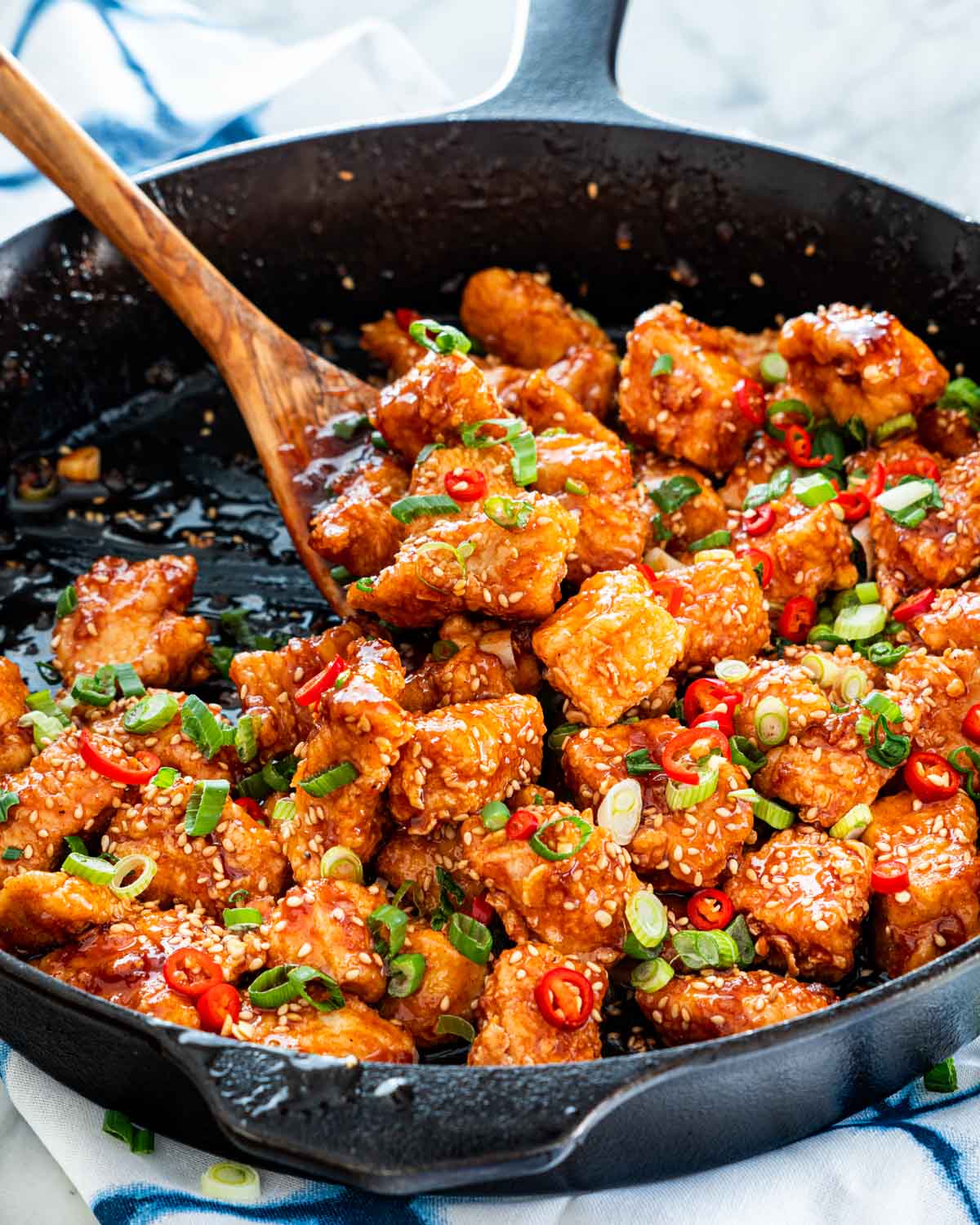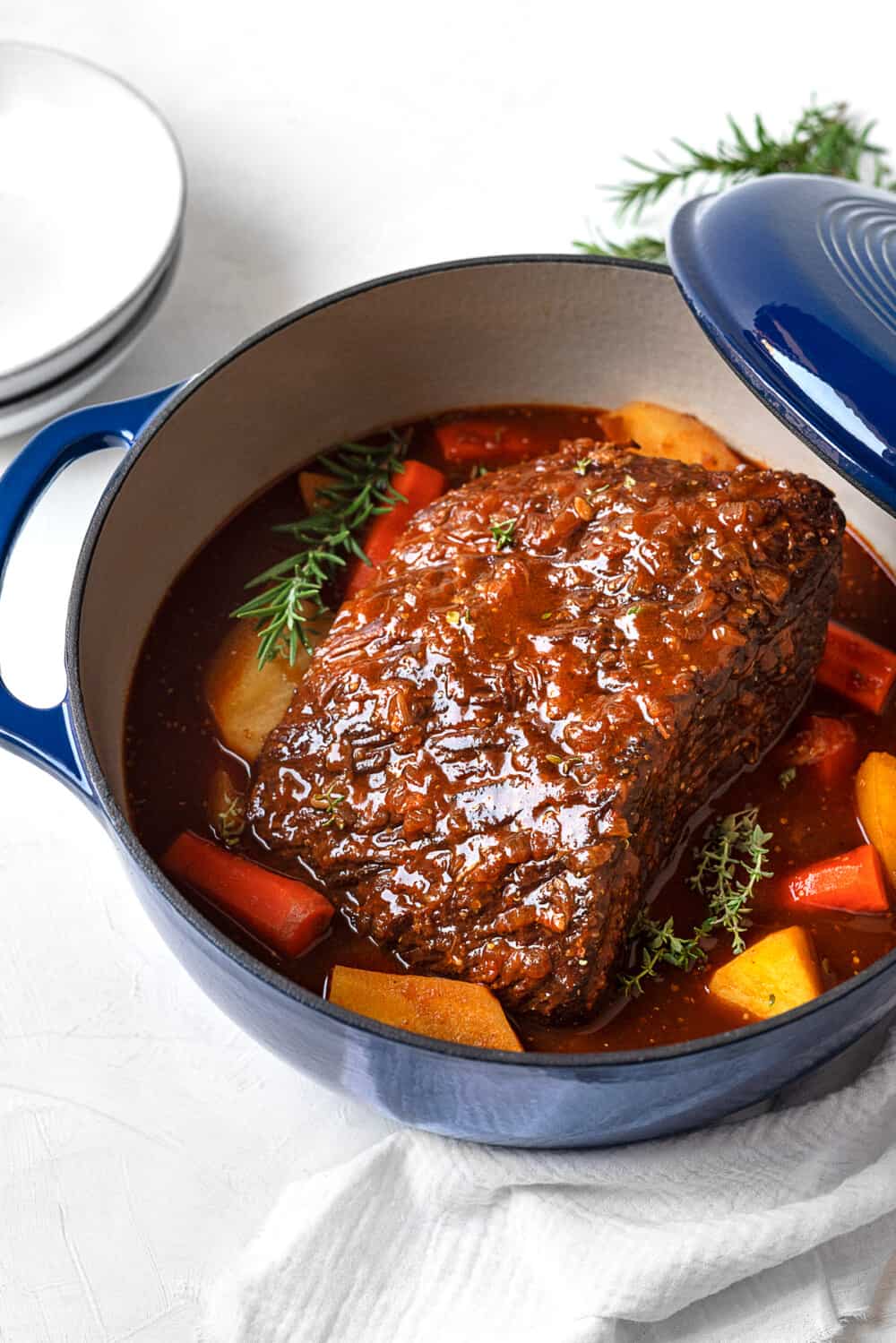How to Make Authentic Korean Bibimbap with Beef

Imagine a vibrant, colorful dish that's as pleasing to the eye as it is to the palate. A dish that combines the best of Korean flavors in a single bowl. That's bibimbap—a traditional Korean dish that translates to "mixed rice." Today, we're diving into the world of Korean food to bring you an authentic Korean bibimbap recipe with beef that you can recreate at home. Are you ready to embark on this culinary adventure?
What is Bibimbap?
Bibimbap is a classic Korean dish that's both visually stunning and incredibly delicious. It's a bowl of warm white rice topped with sautéed vegetables, meat, an egg, and gochujang sauce. The beauty of bibimbap lies in its versatility; you can customize it with your favorite vegetables and proteins. But today, we're focusing on a beef recipe that's sure to impress.
Ingredients: The Building Blocks of Bibimbap
Before we dive into the recipe, let's gather our bibimbap ingredients. Here's what you'll need:
For the Beef:
- 1 lb beef (sirloin or ribeye), thinly sliced
- 3 tbsp soy sauce
- 2 tbsp sesame oil
- 1 tbsp sugar
- 1 tbsp minced garlic
- 1 tbsp grated ginger
- 2 tbsp mirin (optional)
- 1 tbsp toasted sesame seeds
- Black pepper to taste
For the Vegetables:
- 1 small zucchini, julienned
- 1 carrot, julienned
- 1 cup bean sprouts
- 1 cup spinach
- 1 cup shiitake mushrooms, sliced
- 2 tbsp vegetable oil
- Salt and pepper to taste
For the Rice:
- 2 cups short-grain rice
- 2 cups water
For the Gochujang Sauce:
- 2 tbsp gochujang paste
- 1 tbsp sesame oil
- 1 tbsp honey
- 1 tbsp vinegar
- 1 tbsp water
For the Toppings:
- 4 eggs
- 2 tbsp vegetable oil
- Nori strips (optional)
- Kimchi (optional)
Step-by-Step Guide to Authentic Korean Bibimbap
Preparing the Beef
- Marinate the Beef: In a bowl, combine the soy sauce, sesame oil, sugar, garlic, ginger, mirin, sesame seeds, and black pepper. Add the sliced beef and mix well to ensure every piece is coated. Let it marinate for at least 30 minutes.
Cooking the Vegetables
- Sauté the Vegetables: Heat the vegetable oil in a large skillet over medium heat. Sauté the zucchini, carrot, bean sprouts, spinach, and shiitake mushrooms separately, seasoning each with salt and pepper. Set aside.
Cooking the Rice
- Cook the Rice: Rinse the rice thoroughly and cook it according to package instructions or in a rice cooker. Once done, fluff it with a fork and keep it warm.
Preparing the Gochujang Sauce
- Mix the Sauce: In a small bowl, combine the gochujang paste, sesame oil, honey, vinegar, and water. Mix well until smooth.
Cooking the Beef
- Cook the Beef: Heat a large skillet over medium-high heat. Add the marinated beef and cook until browned and cooked through, about 5-7 minutes. Remove from heat and set aside.
Assembling the Bibimbap
Fry the Eggs: Heat the vegetable oil in a non-stick skillet over medium heat. Fry the eggs sunny-side up until the whites are set but the yolks are still runny.
Assemble the Bibimbap: In a large bowl, place a generous serving of rice. Arrange the cooked vegetables, beef, and fried egg on top. Drizzle the gochujang sauce over everything. Add nori strips and kimchi if desired.

Tips for the Perfect Bibimbap
- Use Fresh Ingredients: The key to a great bibimbap is fresh, high-quality ingredients. Fresh vegetables and quality beef will make all the difference.
- Customize to Taste: Feel free to add or omit vegetables based on your preferences. Bibimbap is all about personalization.
- Serve Hot: Bibimbap is best enjoyed hot, with the rice and vegetables still steaming.
The Art of Traditional Cooking
Traditional Korean cooking is about more than just the ingredients; it's about the process. Taking the time to marinate the beef, sauté each vegetable separately, and assemble the dish with care adds layers of flavor and texture. It's a labor of love that pays off in every bite.

Conclusion
Creating an authentic Korean bibimbap recipe with beef is a rewarding culinary journey. From marinating the beef to sautéing the vegetables and assembling the dish, each step brings you closer to a bowl of vibrant, delicious flavors. Whether you're a seasoned cook or a beginner, this recipe is sure to impress. So, grab your ingredients and get cooking—your taste buds will thank you!
FAQs
What is gochujang sauce? Gochujang is a spicy, savory Korean chili paste made from red chili, glutinous rice, fermented soybeans, and salt. It adds a kick of heat and depth of flavor to bibimbap.
Can I use other types of meat in bibimbap? Yes, bibimbap is versatile. You can use chicken, pork, tofu, or even make it vegetarian by omitting the meat and adding more vegetables.
How do I store leftover bibimbap? Store leftover bibimbap in an airtight container in the refrigerator for up to 3 days. Reheat in the microwave or on the stovetop.
What is the best way to cook the rice for bibimbap? Short-grain rice is traditionally used for bibimbap. Rinse the rice thoroughly to remove excess starch and cook it according to package instructions or in a rice cooker.
Can I make bibimbap ahead of time? You can prepare the individual components ahead of time and assemble the bibimbap just before serving. This ensures that the dish is fresh and the ingredients retain their texture and flavor.
0 Response to "How to Make Authentic Korean Bibimbap with Beef"
Post a Comment